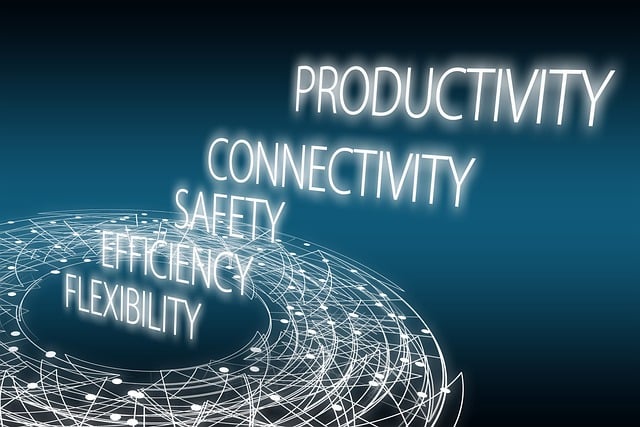5S training and lean management streamline workplace organization by identifying and eliminating operational waste like excess inventory, inefficient processes, and overproduction. This leads to increased productivity, improved profitability, better customer satisfaction, reduced costs, shorter lead times, higher quality, and enhanced flexibility through process standardization and continuous improvement. 5S's five steps—Sort, Set in Order, Shine (Clean), Standardize, Sustain—empower employees to participate in refining workflows and establishing consistent standards.
In today’s competitive business landscape, minimizing operational waste is not just a best practice—it’s a necessity. This comprehensive guide explores effective strategies to optimize your operations and enhance productivity. We delve into understanding the root causes of operational waste, with a focus on its impact on workplace organization and overall efficiency. Learn how implementing 5S training and lean management techniques can drive process standardization and continuous improvement, ensuring your business remains agile and competitive in an ever-evolving market.
- Understanding Operational Waste: Causes and Impact
- Implementing 5S Training for Efficient Workspace Organization
- Lean Management Techniques for Process Standardization
- Continuous Improvement: Iterative Steps Towards Waste Minimization
Understanding Operational Waste: Causes and Impact

Operational waste minimization begins with understanding its root causes. In the context of 5S training and lean management, operational waste refers to any activity or resource that does not add value to a product or service. This can manifest in various forms, such as excessive inventory, inefficient processes, unnecessary movements, overproduction, waiting times, defects, and over-processing. These types of waste not only hinder productivity but also impact profitability and customer satisfaction.
The impact of operational waste is far-reaching. It can lead to increased costs due to higher inventory carrying charges, labor spent on non-value-added activities, and additional energy consumption. Moreover, it results in longer lead times, reduced quality, and decreased flexibility to respond to changing market demands. By implementing principles like process standardization and continuous improvement through 5S training, organizations can identify and eliminate these waste sources, enhancing overall workplace organization and efficiency.
Implementing 5S Training for Efficient Workspace Organization

Implementing 5S Training for Efficient Workspace Organization
In today’s competitive business landscape, minimizing operational waste and enhancing productivity are paramount. One proven strategy to achieve this is through 5S training, a cornerstone of lean management that focuses on workplace organization. The 5S methodology stands for Sort, Set in Order, Shine (Clean), Standardize, and Sustain, each step representing a critical aspect of process standardization and continuous improvement. By teaching employees these principles, organizations can transform their workspaces into streamlined, efficient hubs.
This training involves sorting through items, removing unnecessary clutter, and organizing tools and equipment for easy access. It also emphasizes the importance of maintaining order through consistent practices, regularly cleaning and inspecting areas to prevent re-cluttering, and establishing standardized procedures. By adopting 5S principles, businesses not only create a more pleasant work environment but also reduce waste, improve workflow efficiency, and foster a culture of continuous improvement.
Lean Management Techniques for Process Standardization

Implementing Lean Management techniques, such as 5S training, is a powerful approach to achieving process standardization in any workplace. 5S—which stands for Sort, Set in Order, Shine (Clean), Standardize, and Sustain—is a continuous improvement methodology that fosters an organized, efficient, and waste-free environment. This system encourages employees to actively participate in identifying and eliminating non-value-added activities, streamlining workflows, and establishing consistent standards across the organization.
By embracing 5S principles, businesses can enhance workplace organization, reduce errors, and boost productivity. Regular 5S audits ensure that standardization remains a priority, allowing for ongoing refinement of processes as new challenges arise. This approach not only minimizes operational waste but also empowers employees to take ownership of their roles within the dynamic landscape of modern business.
Continuous Improvement: Iterative Steps Towards Waste Minimization

Continuous Improvement is a key principle in operational waste minimization, often achieved through iterative steps inspired by lean management and 5S training methodologies. This involves systematically examining every aspect of a process or workspace organization to identify inefficiencies and opportunities for enhancement. By fostering a culture of continuous learning, businesses can ensure that their practices remain agile and responsive to change.
Implementing 5S continuous improvement means standardizing processes, sorting through unnecessary steps or items, shining a light on hidden issues, and creating a system that encourages ongoing evaluation and refinement. This approach ensures that waste is not just minimized but eliminated at its source, leading to more streamlined operations and increased productivity.
By understanding and addressing operational waste through strategies like 5S training for workplace organization and implementing lean management techniques for process standardization, businesses can significantly enhance efficiency. These methods, coupled with continuous improvement initiatives, allow organizations to iteratively minimize waste, streamlining operations for better productivity and cost savings. Adopting these practices ensures a more sustainable and competitive edge in today’s market.
